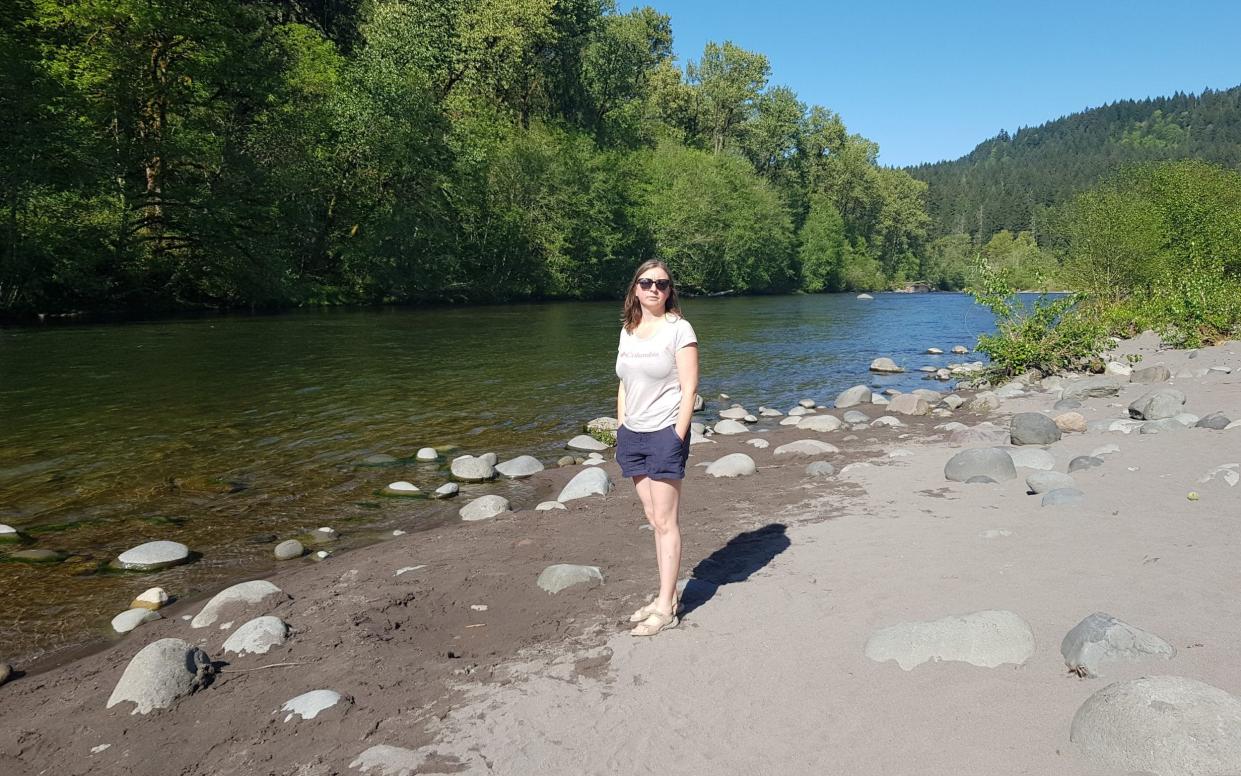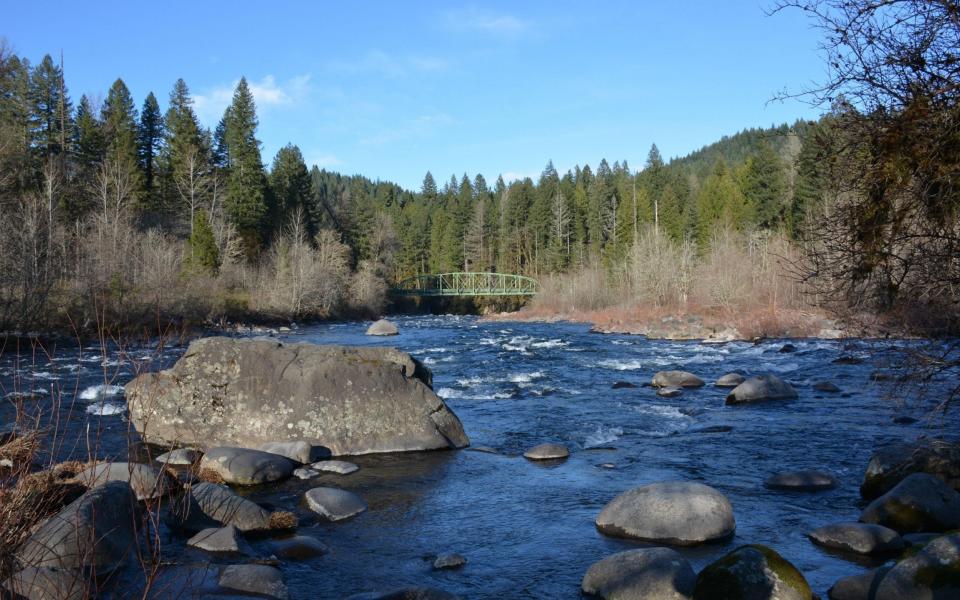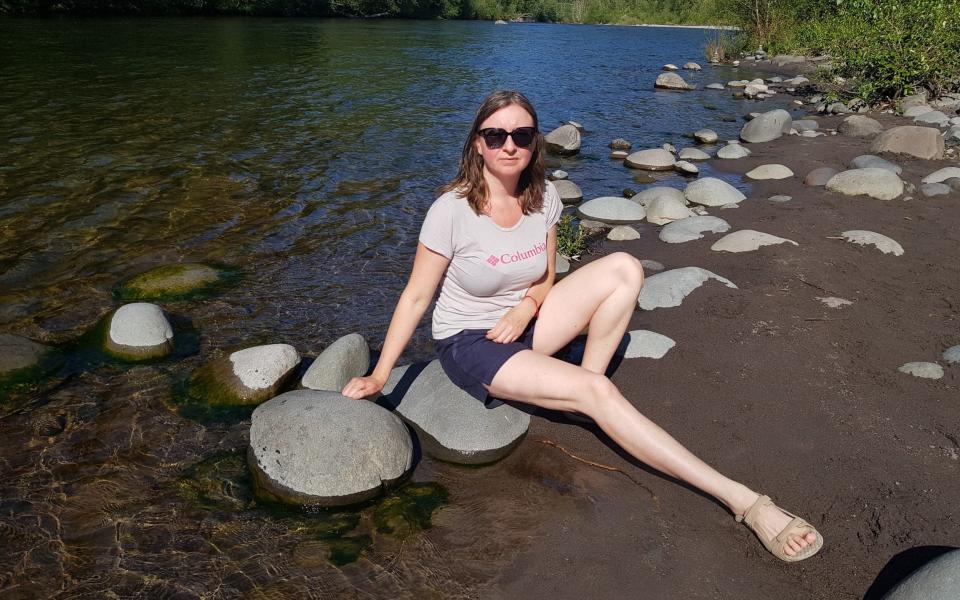I nearly died on a 'calm' river in Oregon

In over 20 years of travel to more than 100 countries, I’ve had my fair share of scrapes and numerous brushes with death. I’ve visited Iraq, Yemen and Syria and been robbed at gunpoint in Kenya. I’ve been very nearly run over crossing the street in Tokyo and Abu Dhabi. I was on a flight from Seattle to Seoul which experienced a mid-air emergency thanks to severe turbulence over the Sea of Japan. In Sri Lanka, a failed whale-watching mission left me and a colleague on a rickety old boat in high seas in the middle of the Indian Ocean. In Vietnam, I was attacked by a vicious shop-owner who tried to extort money from me, and in the south of France I was almost abducted.
Yet probably nowhere have I come closer to death than on what looked like a calm river in Oregon last year. After a long, wet and lonely winter was followed by months of Covid restrictions, I was desperate to get outside into the Oregon spring, with its pure blue skies, abundance of greenery and mild, fragrant air.
I’d been planning a river trip for a while, and wanted to do a much talked about eight-mile “river float” before the drought of summer lowered the water level too much. However, having grown frustrated when my sporty friends had been unavailable, I invited a neighbour to accompany me on this scenic stretch from Dodge Park, less than an hour from Portland, to Oxbow Regional Park, another of the city’s incredible range of outdoor playgrounds.
There were already a number of red flags here: my insistence on doing the trip, the time of year when the river was swollen with snowmelt, the choice of companion and the type of boat used. Another, I’m ashamed to admit, was the failure to wear or even own a life jacket.

And so it was that one gorgeous sunny day at the end of May we drove to the put-in point, just before the confluence of the Sandy and Bull Run rivers. I inflated the dinghy – which in America is called a raft – and we clambered in. I should have stopped when I saw that the boat was dipping down at the back where my neighbour was sitting, yet I carried on, assuming it would still cope.
Yet while from the shoreline the river looked calm, that was about to change. I’d read a guide to the stretch of river we were navigating, and knew to go left at the first “rapid”, known as Pipeline, which was apparently the most difficult part of the whole trip. As soon as we were upon it I sensed a rush of adrenalin quickly followed by panic, as by the time we reached the bottom of the rapid (which I now know is a Class II+ to Class III rapid at that time of year), the boat was almost stuck in a choppy churn of water and rapidly filling up. It was as much as I could do to get us to the nearest calm bend without sinking.
My expensive camera was soaked, but still in the boat, and my phones were also waterlogged. “Have you seen my water bottle?” my neighbour said, just before it floated past.
Shaken, we tried to dry everything out at the nearest beach but resolved to carry on, even after a woman walking her dog – who turned out to be the last person we saw for hours – asked us what we were doing. “On white water?” she said. “In that boat, with no life jackets? People have died here.”
But when I asked her about how to get back to the car through the gorge, she suddenly became uninterested, apparently not willing to help. When I asked my neighbour if we should go back, she said she didn’t want to walk. I later wished I’d insisted.

Of course, the scenery was sensational. The Sandy River enjoys special protection along with a handful of other rivers in this Pacific Northwest state because of its pristine nature and its being un-dammed from its source in the glaciers of nearby Mount Hood, Oregon’s highest mountain, to its end as it discharges into the Columbia River. The river gorge, only fully accessible from the water, reveals pretty overhanging sandstone cliffs mellowing into empty beaches. Birds of prey wheel overhead and salmon jump out of the water.
Yet there was also a sense of foreboding, a feeling that our boat and our bodies were not really up to the task. All I had was the determination to get us home, which I used to try and override the tension which built with each bend in the river.
The rapids we now encountered seemed no easier than the first, but there was no option but to go down them, tackling each obstacle as it came until we got to our destination. Each time I rowed us to shore to empty the boat and steel ourselves for the next section, we discovered more items missing: a bag here, a blanket there. My neighbour, who was doing a good job of not freaking out, tried to call her husband, but there was no reception, so I shoved her phone and what remained of our valuables in a dry bag and lashed them to the front of the boat. As we went down the next drop, I had to paddle furiously to keep the boat moving forward and not get trapped under the force of water. On shallower drops, our backsides were hammered by boulders as the boat gradually lost air.
Exhausted from having paddled most of the way, we were only about a hundred yards from our end point at the boat ramp at Oxbow Regional Park, another gorgeous area featuring old growth forest; slow, wide river bends; and excellent wild swimming. And then I saw that the river was turning at almost a right angle around a massive island of dead trees, which I later learnt was called “deadfall”.
What I failed to realise was that the water was also flowing through and under this mass, resulting in what are chillingly referred to as “strainers” – semi-submerged logs and vegetation against and within which people are easily pinned, trapped and drowned.

“Paddle!” screamed my neighbour, but where our boat should have turned left, it was driven by the current straight into an enormous horizontal tree trunk where it promptly flipped. Immediately, we were dumped into the water, and I was pushed down and into a cave-like underwater scene. Looking up, I could see daylight coming through the trees, but there was no way out other than swimming so hard against the current that I effectively catapulted out of the water at an angle and screamed at some nearby kayakers to help.
Since my prescription sunglasses and everything else had washed away, I was unable to see where my neighbour was. Thankfully, she had fallen out of the back of the boat further away from the current, bobbed down under a tree and come up into an air pocket the other side. The kayakers extracted her and our boat and took us to the boat launch, where we were quite rightly berated for not wearing life jackets.
As soon as I got home I ordered two, and now, whether it’s a calm lake, a group boat trip or any swim in a river I wear one. I also learnt that plenty of people, including strong swimmers, have drowned over the years in this exact area and in rivers across the state.
I still experience flashbacks. It has now been almost a year, but I am still grateful every single day to be alive. I’ve resolved to be more careful, and now realise that with all the dangers that we can experience anywhere in the world, often the scariest things are right on our own doorstep.
For far less dangerous experiences in the US, see our pick of 50 reasons to visit, one for every state.


